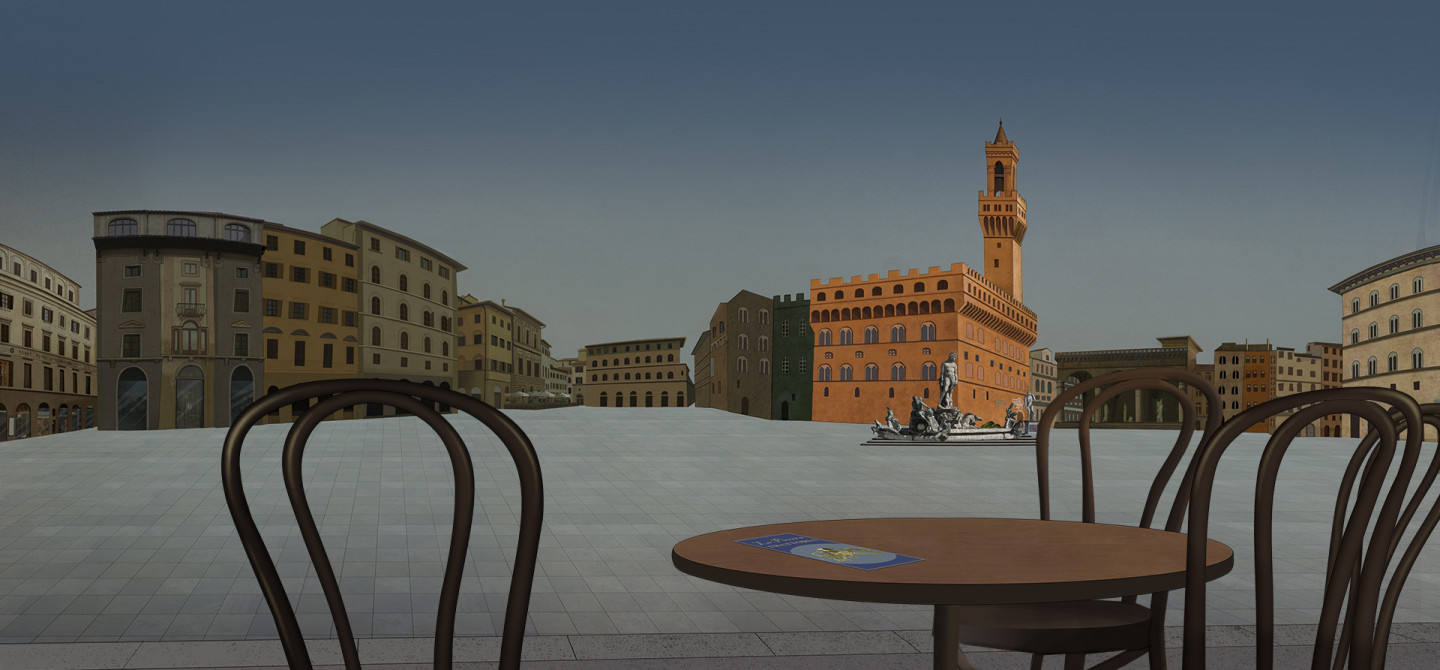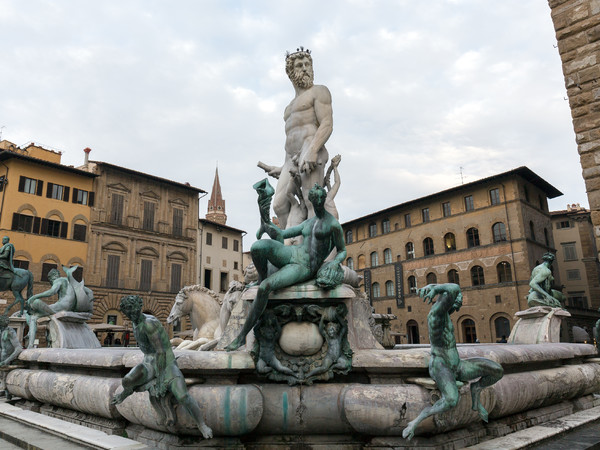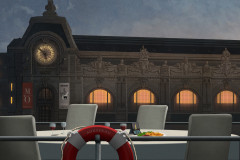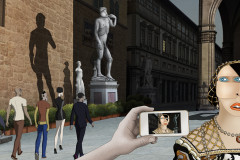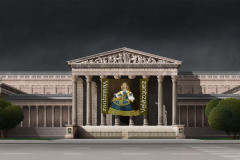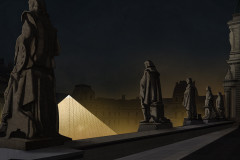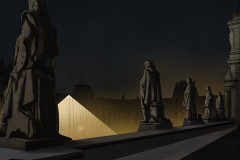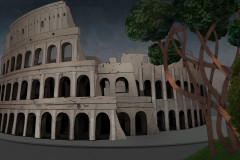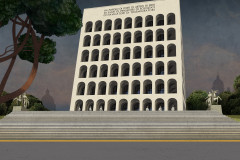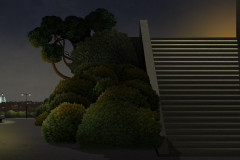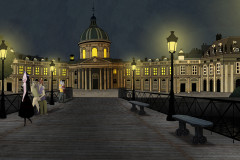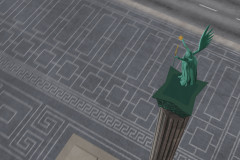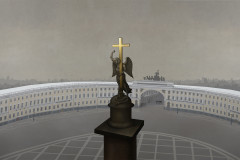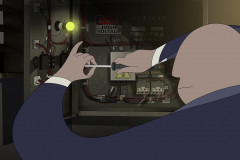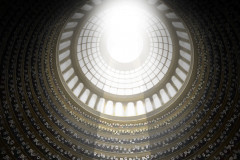Firenze főterén, a Piazza della Signoria-n, a Palazzo Vecchio mellett áll Neptunusz kútja. Bartolomeo Ammanati valószínűleg nem repesne az örömtől, ha tudná, a firenzeiek csak Il Biancone (A Nagy Fehér) néven emlegetik a szobrát. Mondjuk tényleg elég nagy, 4,2 méter. A tengeristen manierista alakja márványból készült, a kút peremén pedig a bronzszobrok folyamisteneket, szatírokat és nimfákat ábrázolnak. Neptunuszt és hozzá a szökőkutat egy új, folyó vizet szállító vízvezeték építésekor terveztette Cosimo de' Medici. Az együttes kb. 10 év munka után 1565-re lett kész, épp Cosimo fiának az esküvőjére - mint sok más építészeti/képzőművészeti beruházás ebben az időben. Az időzítés nem véletlen, hiszen a kút fontos díszlete volt az ünnepi menetnek.
Szegény Neptunusz nem volt túl szerencsés, elég sokszor vált vandalizmus áldozatává. A megépítése után a firenzeiek gyakran tintás edények kiöblítésére használták a kutat, 1830-ban a karneváli menetben ellopták egy szatír szobrát, 2005-ben pedig fiatalok másztak fel a szoborra, megrongálták és az egyik karját is letörték.
A filmben a Neptun-kút Kowalski és informátora firenzei randiján látszik a háttérben. A Piazza della Signoria tér északi szélén ülnek le beszélgetni, így Marina mögött a város szépségeit is megcsodálhatjuk.
Neptune Fountain
In Florence’s main square, the Piazza della Signoria, next to the Palazzo Vecchio, stands the Fountain of Neptune. Bartolomeo Ammanati probably wouldn’t be thrilled to know that locals simply refer to his sculpture as Il Biancone ("The Big White One"). Admittedly, it is rather large—4.2 meters tall. The Mannerist figure of the sea god is carved from marble, while the bronze sculptures on the fountain’s edge depict river gods, satyrs, and nymphs. The fountain and Neptune statue were commissioned by Cosimo de’ Medici to mark the construction of a new aqueduct that brought fresh water to the city. After nearly a decade of work, the ensemble was completed in 1565—just in time for the wedding of Cosimo’s son, like many major architectural and artistic projects of that era. The timing was no accident: the fountain played an important role in the ceremonial backdrop of the festivities.
Poor Neptune hasn’t had much luck over the years and has suffered repeated acts of vandalism. After its completion, locals often used the fountain to rinse out inkwells. In 1830, a satyr statue was stolen during a carnival procession, and in 2005, youths climbed the statue, damaged it, and broke off one of its arms.
In the film, the Neptune Fountain appears in the background during Kowalski’s meeting with his informant in Florence. They sit down to talk on the northern edge of Piazza della Signoria, with the city’s beauty visible behind Marina.






